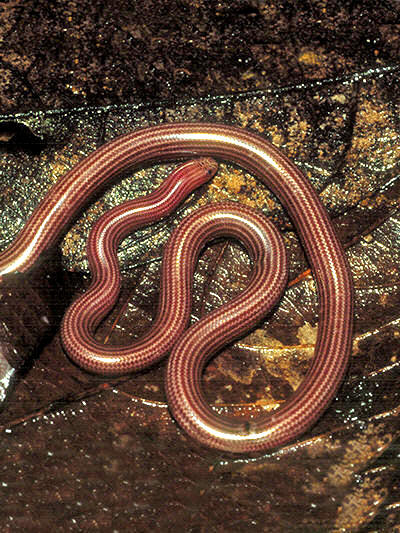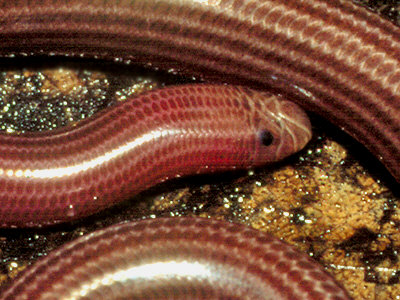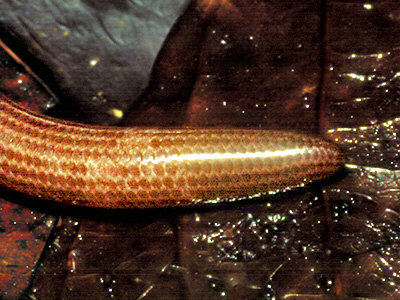
Fig 1

Fig 2

Fig 3
|
Family : TYPHLOPIDAE
Species : Typhlops sp. / Ramphotyphlops sp.
Specimen Size : 55 cm There are reckoned to be
at least 11 species of blind snake in Papua New Guinea, though doubtless the
true species count is much greater. These are secretive, burrowing snakes
which rarely come to the surface unless disturbed by earthworks or
heavy rain.
Blind
snakes are instantly recognisable by their smooth, cylindrical profile,
short tail, small head and tiny eyes : all features which have evolved to
suit their burrowing habits. They are not totally blind, however, and are
probably able to distinguish between light and dark. Blind snakes feed
mainly on the soft larvae and eggs of ants and termites.
It is not possible to identify the
species shown here with any certainty - it could be Typhlops depressiceps, T.
mcdowell, Ramphotyphlops angusticeps or R. multilineatus
(Van Wallach, pers. comm.). Its patterning and colour is quite
different, however, and it may represent an undescribed species - one of
many likely to be lurking somewhere in the forests of New Guinea.
Blind snakes are distributed throughout PNG.
Figs 1 to 3 : Measuring 55 cm in length, this blind snake was
found close to primary forest in the Southern Highlands Province of PNG,
at an elevation of 710 metres.
References :
O'Shea, M., 1996. A Guide to the Snakes of Papua New Guinea. Independent
Publishing Group Pty Ltd.
|